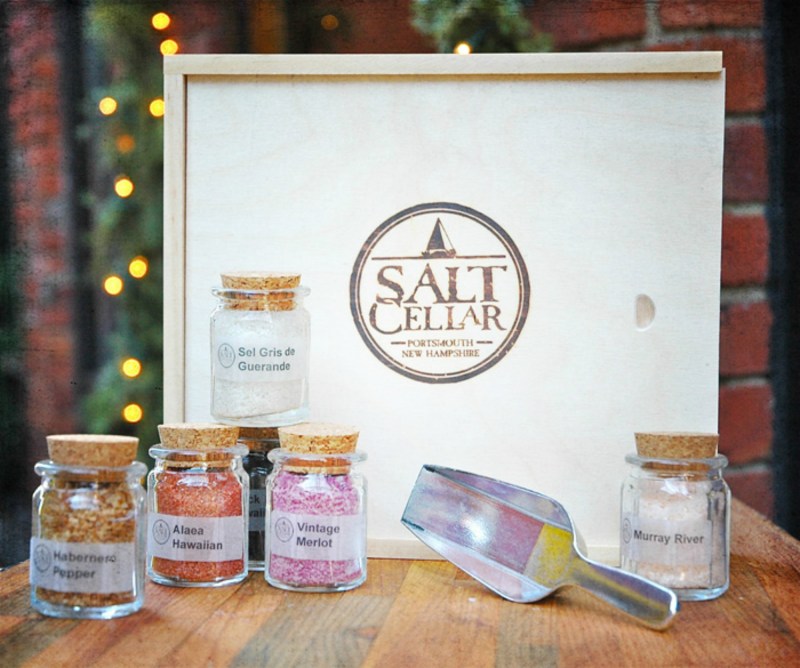
Downstairs on Middle Street, the Cellar is a cool, dimly lit space devoted to salt in its purest form. Entire walls made of sparkling, reddish blocks that look more like collectible crystals than the 1150 mg of last night’s bacon cheeseburger.
Even when the salt looks this good, it’s the taste that carries it home. There are enough finishing flavors to keep you occupied for a long weekend. Applewood smoked, Vintage Merlot, Spanish Rosemary, and Lime Fresco, are only a handful of the forty-plus finishing salts to choose from.
The best way to discover your favorite is to start tasting. The owners are extremely knowledgeable and friendly, so use them to the best of your advantage while tasting your way through the store. In keeping with the idea that less is more, the salt comes in small glass bottles. The grains are so distinctly flavored that a mere dusting goes a long way.
One of our favorites is the black truffle. Without any of the faux “truffle” flavoring that goes into so many exorbitantly-priced products today, the grains have been liquefied into salt-water, soaked with actual Italian black truffles, then solidified back into grains that immediately awaken your taste buds. Move over, table salt.
If you want to experiment with all the Salt Cellar has to offer, the shop also sells soaps, mud masks, salt body scrubs, Dead Sea soaking salts, and Himalayan salt candles. If you can’t make the trek to Portland anytime soon, check out their list of salts here.
Editors' Recommendations
- This is how to sharpen a serrated knife the right way
- How to make Ranch Water the right way
- 5 simple tips for doing Thanksgiving wine the right way
- The ultimate guide to disposing of cooking oil the right way
- How to Make an Old Fashioned the Right Way


